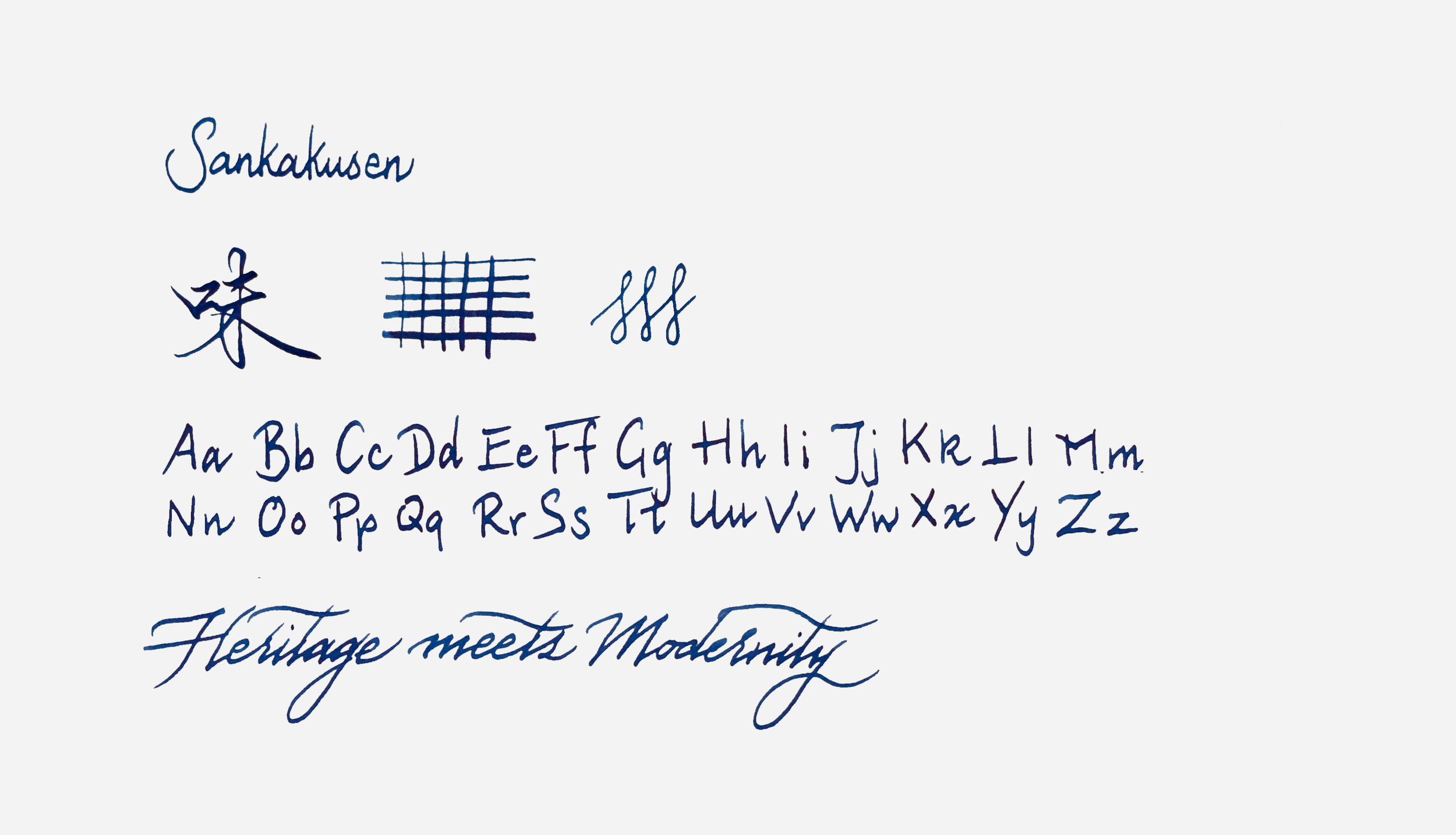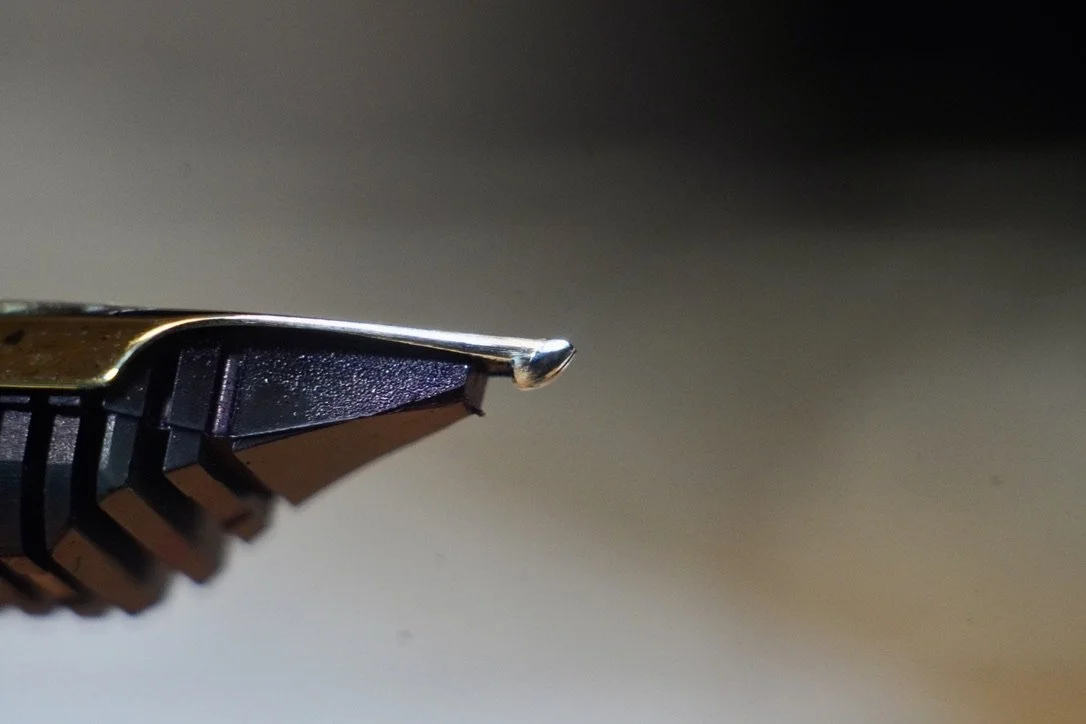
Sankakusen


Sankakusen/Kodachi/
Naginata Togi
While this grind has many names, the most famous of these is the Naginata Togi. Naginata Togi nibs were created for Sailor by Nobuyoshi Nagahara and first introduced into the catalogue in 1991. Sailor’s record keeping was notoriously unreliable, so it is unclear if Sailor had unofficially offered this grind prior to it’s introduction into the official offering, but anecdotal reports suggest that Nobuyoshi Nagahara, or Nagahara Senior as he is commonly referred to in the English language fountain pen community, was studying past nibs of both Sailor and other manufacturers in his search to create a new nib more suitable for writing Japanese characters. Specifically, the contemporary nibs had by that time mostly developed into round shapes that gave monoline line widths at constant pressure. Of course, with controlled pressure, a skilled user could still produce the line variation that simulate traditional East Asian calligraphy, but there was no nib on the market that could crate such pen strokes naturally without pressure.
Many people claim that Nagahara Senior was inspired by Montblancs of the 70s and 80s, especially the Fine and Extra Fine widths of that era. Montblanc F and EF nibs tend to have a long but narrow gradient upwards flair not unlike the a very slim version of the modern day Naginata Togi; indeed, such Montblanc pens are still valued by many Chinese calligraphers for their architect-like quality. It is believed that Nagahara Senior took inspiration from said Montblanc nibs and reinterpreted it on a larger and more exaggerated surface and culminated in the beginning of what we know today as the Naginata Togi.
It should be noted that the vast majority of Naginata Togi nibs are hand ground, and therefore have natural variance between copies. However, there are distinct eras of Naginata Togis. The first era of Naginata Togis, believed to be mostly ground personally by Nagahara Senior, tend to feature a rounded tip and less defined. This means that the line variation is not as dramatic as the later eras, but is generally more user friendly.
Because Sailor holds the trademark to the name “Naginata Togi”, we at Kyuseido cannot offer products under that name. Therefore, we sought to find a neutral and free name for this grind. In line with the way that we want to describe our multi-layered nibs, we decided to call this grind the sankakusen (三角尖) nib. Not only does this pay homage to the shape of the grind, which was made to resemble the Japanese curved blade, it is also how many Chinese calligraphers already describe these grinds. Our default width on the sankakusen nib is the SK-M, which stands for Sankakusen Medium, but we do accommodate from SK-EF (Sankakusen Extra Fine) to SK-BB (Sankakusen Double Broad). Do notice that sankakusen versions of the nib width are not equivalent to that of regular nibs, so even an SK-M would write closer to a B or even BB nib for most pens, whereas an SK-EF would be closer to an F nib. We require starting from a nib such as a Sailor Zoom or Pilot/Platinum Coarse nib, while mini versions of the sankakusen can be ground from nibs with a starting size of B.
Although it is said to be the nib best suited for East Asian scripts, we at Kyuseido find that it is also very good for block print and bold lettering. It can be used in a similar way to a very forgiving architect nib. A good use case is for quick work notes that are printed bold and big to ensure easy reading when reviewing your notes. Many left handers also tell us that they enjoy the sankakusen nib for it’s forgiving nature that still delivers on flair.
The second era has Nagahara Senior and Yukio Nagahara, or Nagahara Junior, working on the nibs together. This era tends to have a stronger definition in cut, but still a slightly rounded tip. This is arguably the most well balanced version of the Naginata Togi. The third distinct era is when Nagahara Junior took over fully from his father and this era features a sharp tip which maximises variation and is generally more visually refined, but can feel scratchy especially on up strokes. The fourth and current version as of writing marks the post-Nagahara era and is generally described to be similar to the third era, but less defined when writing. It should be noted that the vast majority of Naginata Togi nibs are hand ground, and therefore have natural variance between copies.
Standard NAGs are officially known to have been offered in NMF, NM, and NB. Some nib grinders may also call the Naginata Togi grind a Kodachi. A NAG cannot be tested by the regular means of side stroke and down stroke. Some grinders also try to test their NAGs only by testing the nib at different writing angles, and while it is true that different angles will yield different line weight, that is not the test of a NAG. When testing a NAG, the best test of quality is to perform a swift stroke from upper right to lower left, the harai stroke. The nib should lay a fat line where it is placed onto the paper, and finish with a sharp point where the nib is lifted off the paper.




